Our “Tokyo Shitamachi Tour” category recommends where to visit for sightseeing in Tokyo’s Shitamachi area (the area along and east of the Sumida River). We select a different theme each time and propose a model course of casual self-guided tours.
If you plan to visit Tokyo, the Tokyo Shitamachi Tour is exactly for you. It will help you to find where to go in the Shitamachi area of Tokyo.
We chose Kappabashi Kitchenware Town and Yasaki Inari Shrine. As these two sites are close to each other, you can enjoy both all at once.
Yasaki Inari Shrine is famous for the spectacular ceiling paintings in the main hall. This Shinto shrine is also known as one of the Seven Lucky Gods of Asakusa.
Kappabashi Kitchenware Town is a wholesale area of cooking utensils. There are 170 specialty shops lined up across the road. And most shops support retail sales; even individuals can buy their cookware and tableware at reasonable prices.
This blog post will cover the highlights of Kappabashi Kitchenware Town and Yasaki Inari Shrine. For your self-guided tour, you can visit all of them, or you can pick some of them. It’s all up to you!
We hope this blog post will help you somewhat when you visit Tokyo for sightseeing. If you have any questions, feel free to contact us through the contact form.
This blog post is also available in Japanese. You can refer to it at the following link:
Tour Overview
This self-guided tour features Kappabashi Kitchenware Town and Yasaki Inari Shrine in Taito Ward of Tokyo. Both sites are about 15 minutes away from Sensoji Temple. So you can walk to them before or after visiting Sensoji Temple.
This self-guided tour is ideal if any of the following hits you:
- I want to visit sites other than Sensoji Temple in the Asakusa area;
- I want to enjoy the 100 paintings of the horse riding history in Japan;
- I want to buy cooking utensils or tableware from a large selection;
- I am interested in the Seven Lucky Gods of Asakusa;
- etc.
Duration
- Duration: Appoximately 1 hour
Departure & Return
- Departure point: The Elevetor Exit of Tawaramachi Station on the Ginza Line
- Return point: The A1 Exit of Asakusa Station on the Tsukuba Express Line
Itinerary
- Tawaramachi Station on the Ginza Line
- Bois Boulogne (my favorite bakery)
- Kappabashi-Dori Street #1
- The Jumbo Chef Statue at Niimi Cooker
- Saito, the White Coats
- Yasaki Inari Shrine
- The 100 Paintings of the Horse Riding History in Japan
- The Seven Lucky Gods of Asakusa
- Kappabashi-Dori Street #2
- The Golden Kappa Statue
- The Gigantic Beetle
- Kappabashi-Hondori Street
- Asakusa Station on the Tsukuba Express Line
Restrooms
- Tawaramachi Station on the Ginza Line
- Asakusa Station on the Tsukuba Express Line
- Matsuba Park
- Kinryu Park
- Taito Lifelong Learning Center
- Some convinience stores
- etc.
Tour Details
Route Details
Tawaramachi Station on the Ginza Line (the Elevator Exit)
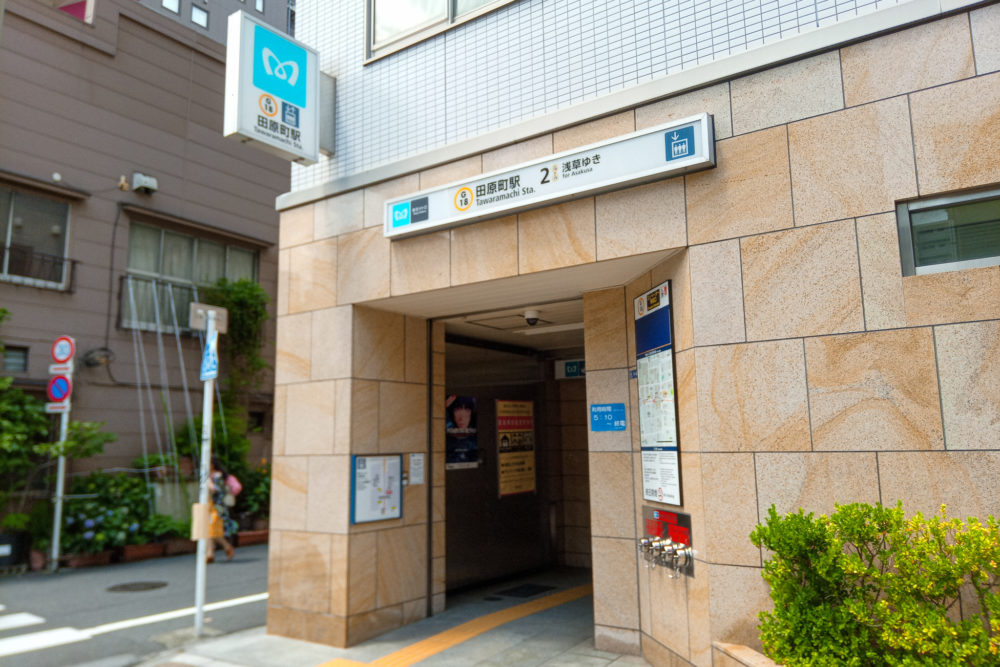
The departure point for this time is the Elevator Exit of Tawaramachi Station on the Ginza Line. This station has four exits, but the Elevator Exit is the most convenient for this tour.
When you get to the ground level from the elevator exit of the station, you will see Asakusa-Dori Avenue in front of you. Turn right and walk along this avenue toward Ueno.
Bois Boulogne
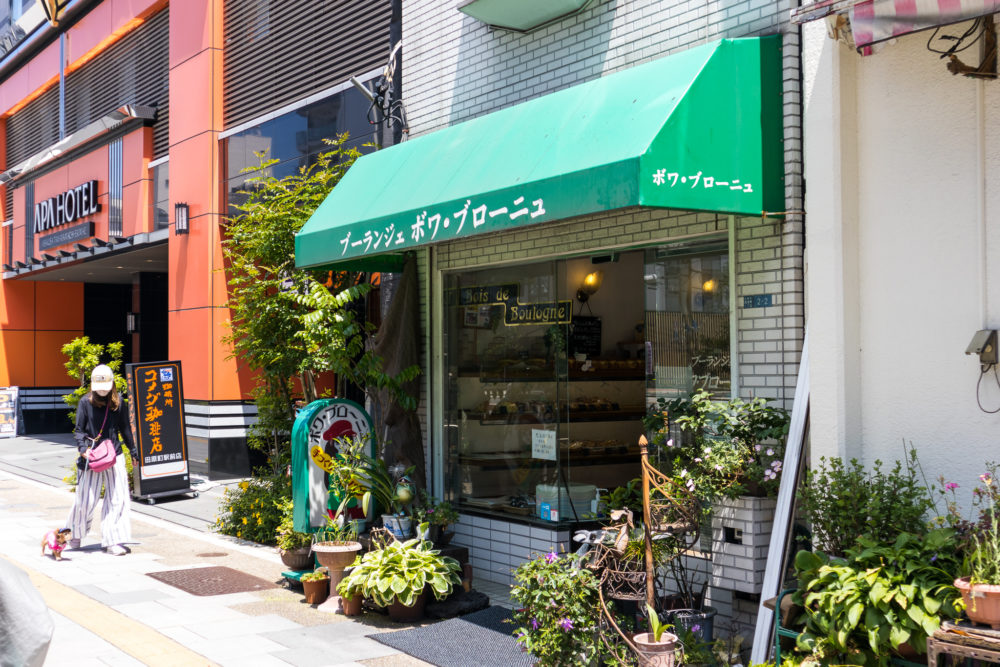
One minute away from the Elevator Exit of Tawaramachi Station, you will find a bakery named Bois Boulogne.
We strongly recommend their raisin bread, rusks made from raisin bread, and stuffed bread. Notice that raisin bread is available only on Tuesday, Friday, and Saturday.
Kappabashi-Dori Street #1
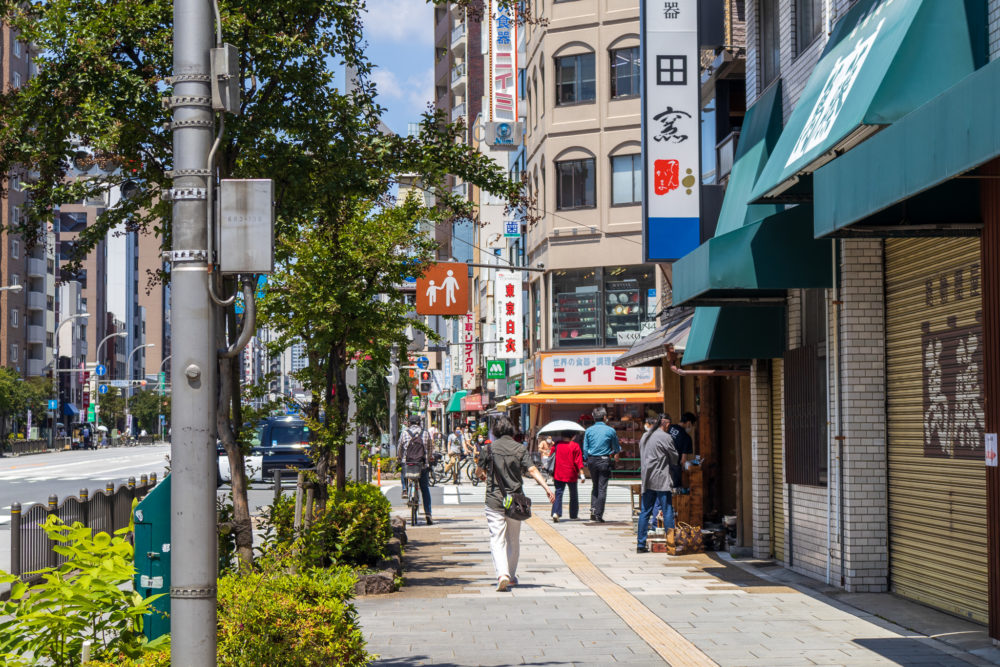
The Jumbo Chef Statue at Niimi Cooker
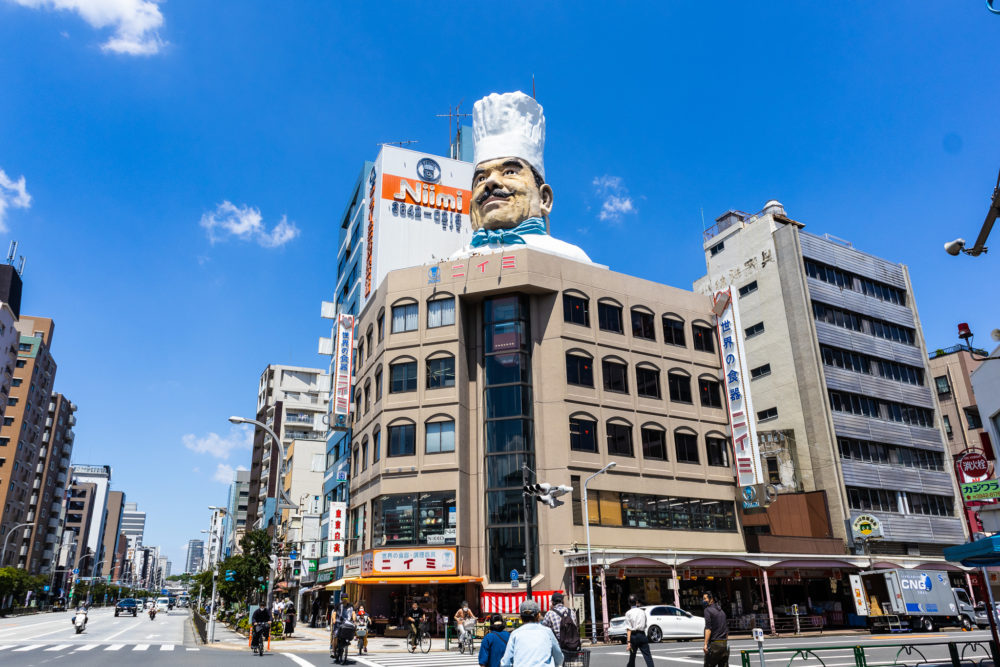
Walk along Asakusa-Dori Avenue towards Ueno for another 3 minutes. Then you will see a gigantic statue of a chef. It is the Jumbo Chef Statue at Niimi Cooker. He is the symbol of Kappabashsi Kitchenware Town.
Niimi Cooker is the south entrance to Kappabashi Kitchenware Town. Turn right at this shop and walk along Kappabashi-Dori Street.
Saito, the White Coats

Yasaki Inari Shrine is in a back-alley from Kappabashi-Dori Street. The landmark of the alley is Saito, the White Coats. When you turn left at Saito, you will see Yasaki Inari Shrine ahead.
It takes about 5 minutes from Niimi Cooker to Saito. This shop specializes in uniforms and shoes for chefs.
Yasaki Inri Shrine

The one-minute walk from Saito brings you to Yasaki Inari Shrine.
In 1698, the Tokugawa Shogunate built Asakusa Sanjusangen-Do Hall here. This building was for archery exhibition contests. And Yasaki Inari Shrine was built to guard the hall.
For more details on Yasaki Inari Shrine, please refer to the following blog post:
The 100 Paintings of the Horse Riding History in Japan
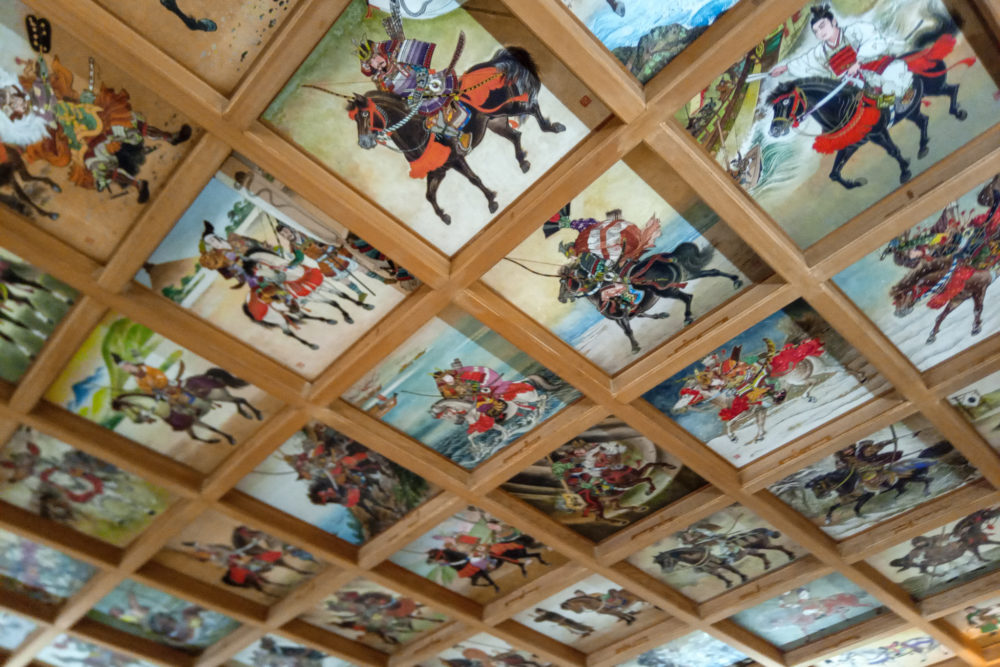
On the ceiling of the worship hall at Yasaki Inari Shrine, you can see 100 paintings with a horse riding motif. These paintings depict the Japanese Horse Riding History from Emperor Jinmu, the first emperor of Japan, to Colonel Nishi of World War II.
These paintings are open to the public; you can enjoy them for free. However, you will have to take off your shoes when you get into the worship hall. And barefoot is not allowed; you need to ware shocks or stockings.
One more thing. You can take pictures of the drawings. But you cannot take any images of deities in the worship hall.
The Seven Lucky Gods of Asakusa
Yasaki Inari Shrine enshrines Fukurokuju beside Inari. Fukurokuju is a Buddhist god of happiness, financial fortune, and longevity. And Fukurokuju at this shrine is one of the Seven Lucky Gods of Asakusa.
For more details on the Seven Lucky Gods of Asakusa, please refer to the following blog post:
Kappabashi-Dori Street #2
The Statue of Kawataro, the Kappa (The Golden Kappa Statue)

After visiting Yasaki Inari Shrine, go back to Saito, the White Coats, on Kappabashi-Dori Street. Here, let’s walk along this street towards the North, which is, the opposit direction of Niimi Cooker.
If you walk for about 2 minutes from Saito, you will find a golden kappa statue on your left. According to the official website of Kappabashi, this statue was to commemorate the 90th anniversary in Kappabashi Kitchenware Town.
The Gigantic Beetle
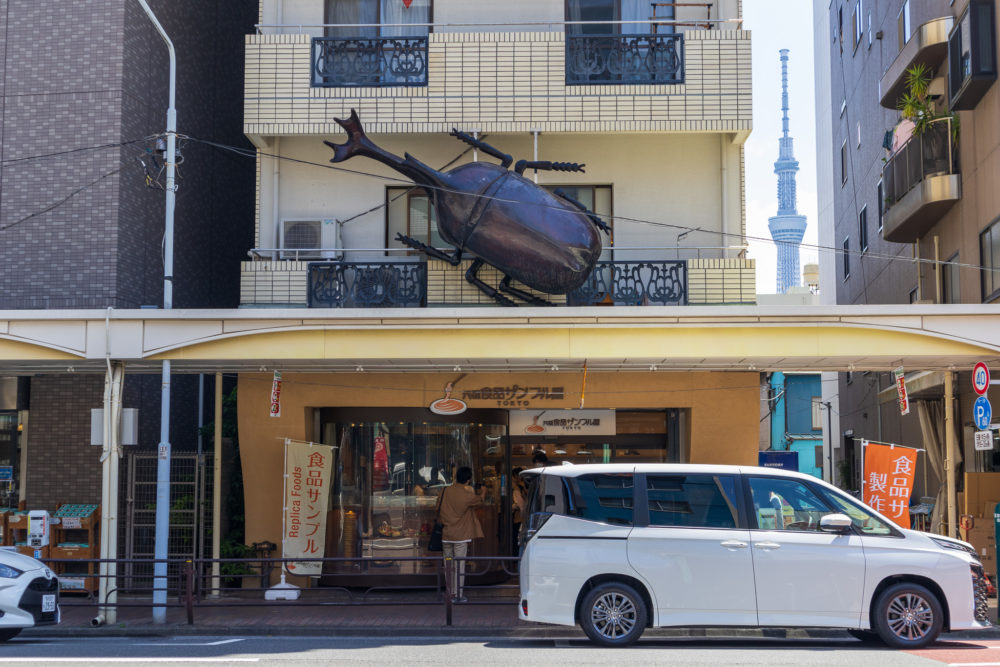
If you walk along the street from the golden statue for another minute, you will find a gigantic beetle on a wall of a building. Ganso Shokuhin Sample-Ya, a company specializing in food samples, made this beetle for an entomological exhibition.
Kappabashi-Hondori Street
Walk back to the south from the gigantic beetle, then turn left at the first intersection. This is Kappabashi-Hondori Street. Here, you can see Tokyo Skytree in front of you on this street.
If you walk along this street for about 10 minutes or so, you will get to Kokusai-Dori Avenue. The A1 Exit of Asakusa Station on the Tsukuba Express Line is on the other side of this avenue.





